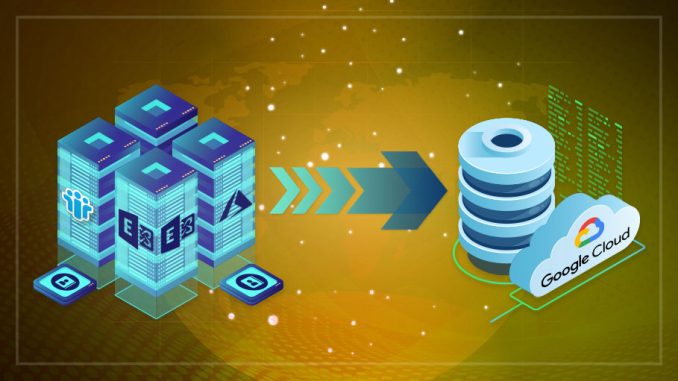
Introduction to Google Cloud Directory Sync
In today’s digital age, managing user information efficiently is crucial for organizations of all sizes. From onboarding new employees to updating user credentials, maintaining a centralized directory plays a vital role in streamlining operations. That’s where google cloud directory sync comes into play, revolutionizing the way organizations manage their user directories.

But why is directory synchronization so important? Imagine a scenario where you have multiple systems and applications that require user information. Without synchronization, updating user details across these platforms would be a tedious and error-prone task. Directory synchronization eliminates these challenges by automating the process, ensuring that user data remains consistent and up to date across all systems.
So, what exactly is Google Cloud Directory Sync? Google Cloud Directory Sync, also known as GCDS, is a powerful tool offered by Google Cloud that allows organizations to synchronize their existing user directories with Google Cloud. It enables seamless integration between on-premises directories, such as Active Directory or LDAP, and Google Workspace.
Let’s explore the benefits of using Google Cloud Directory Sync for organizations:
- Efficient User Management: With GCDS, organizations can effortlessly synchronize user accounts, groups, and organizational units (OUs) between their existing directory and Google Cloud. This ensures that user information is always up to date, minimizing administrative overhead and enhancing productivity.
- Enhanced Security: By synchronizing user accounts with Google Cloud, organizations can leverage Google’s robust security features to ensure data protection. This includes advanced authentication methods, role-based access controls, and encryption, providing peace of mind when it comes to managing sensitive user information.
- Simplified Onboarding and Offboarding: GCDS simplifies the onboarding and offboarding processes by automating the creation and deletion of user accounts. When a new employee joins the organization, their account details can be automatically synchronized, granting them access to the necessary resources. Similarly, when an employee leaves, their account can be swiftly deactivated or deleted, ensuring data integrity.
In the next section, we will delve into the process of setting up Google Cloud Directory Sync, guiding you through the installation and configuration steps. Stay tuned to unlock the full potential of directory synchronization with Google Cloud!
Setting up Google Cloud Directory Sync
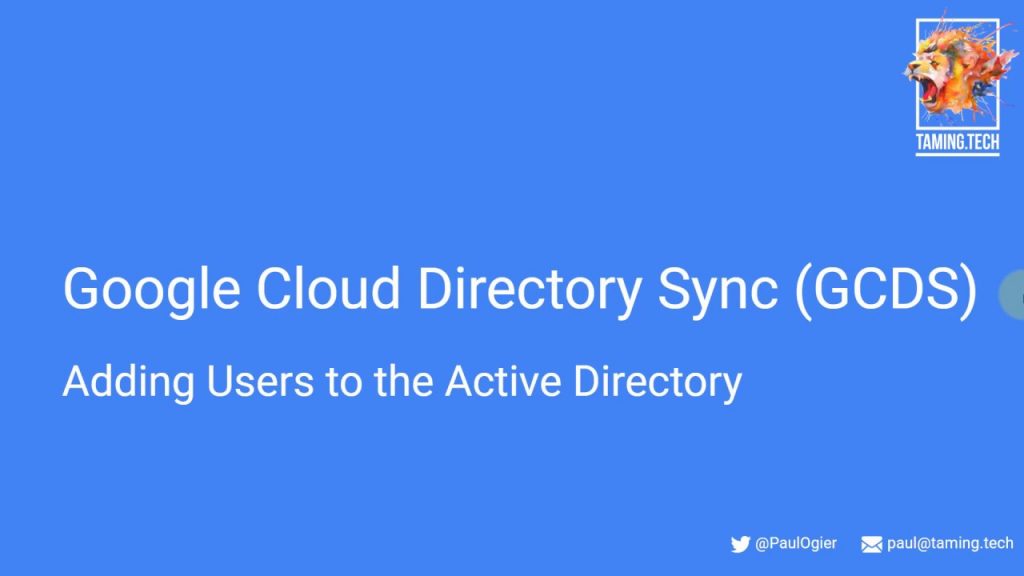
Step-by-step Guide to Install and Configure Google Cloud Directory Sync
To harness the power of Google Cloud Directory Sync (GCDS), let’s walk through the step-by-step process of setting it up:
- Download and Install GCDS: Begin by downloading the GCDS installer from the official Google Cloud website. Once downloaded, run the installer and follow the on-screen instructions to complete the installation process.
- Configure Connection Settings: After installation, launch GCDS and navigate to the “Connection Settings” section. Here, you will need to provide the necessary credentials and details to establish a connection between your existing directory and Google Cloud.
- Specify Synchronization Scope: Next, you’ll need to define the scope of synchronization. This includes selecting the organizational units (OUs) or groups that you want to synchronize with Google Cloud. By specifying the synchronization scope, you can tailor the synchronization process to meet your organization’s specific requirements.
Explanation of Various Configuration Options and Their Significance
During the configuration process, it’s essential to understand the various options available in GCDS and their significance. Let’s explore a few key configuration options:
- Attributes Mapping: GCDS allows you to map attributes between your existing directory and Google Cloud, ensuring that the relevant user information is synchronized accurately. You can map attributes such as username, email address, phone number, and more.
- Password Synchronization: One crucial aspect of directory synchronization is password management. GCDS provides options to synchronize passwords from your existing directory to Google Cloud, ensuring a seamless login experience for users across systems.
- Scheduled Synchronization: To keep user information up to date, GCDS offers the ability to schedule synchronization at regular intervals. This ensures that changes made in the existing directory are reflected in Google Cloud in a timely manner.
Best Practices for Setting up Synchronization Rules
To optimize the synchronization process and ensure smooth operations, consider the following best practices:
- Define Clear Synchronization Rules: Take the time to define clear synchronization rules that align with your organization’s needs. This includes mapping attributes accurately, specifying the synchronization scope effectively, and deciding on password synchronization policies.
- Test and Validate: Before implementing GCDS in a production environment, it’s crucial to thoroughly test and validate the synchronization process. This helps identify and rectify any potential issues or conflicts before they impact your users.
- Regularly Review and Update: As your organization evolves, it’s essential to regularly review and update your synchronization rules. This ensures that GCDS continues to meet your evolving requirements and remains aligned with any changes in your existing directory structure.
By following these steps and best practices, you’ll be well on your way to setting up Google Cloud Directory Sync successfully. In the next section, we will explore how to manage user accounts effectively using GCDS.
Managing User Accounts with Google Cloud Directory Sync
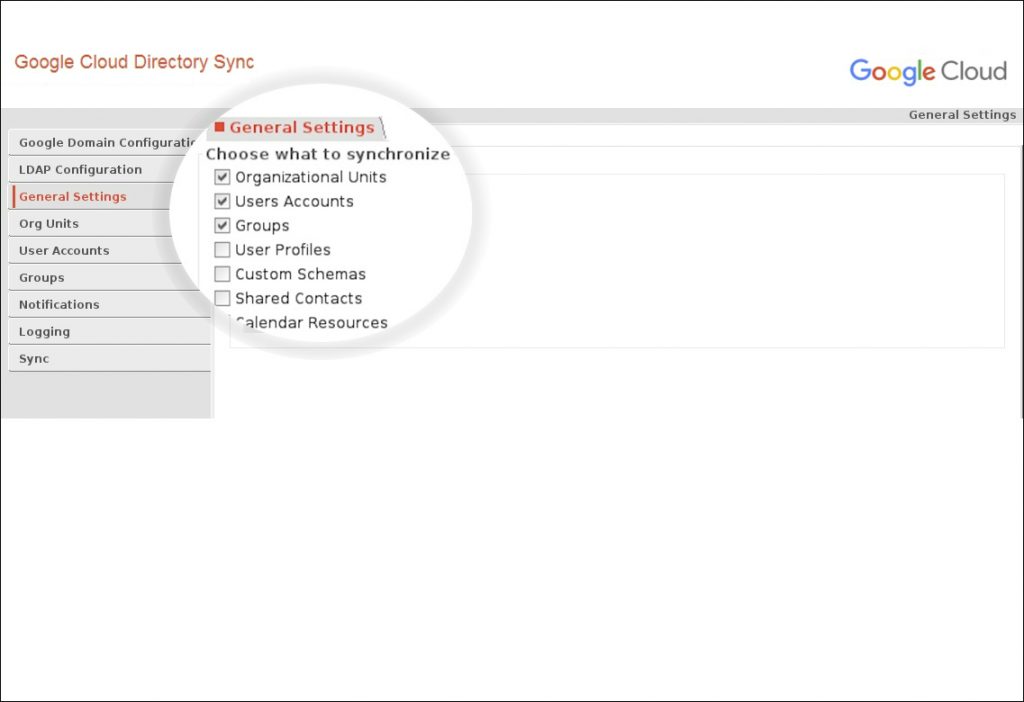
Synchronize User Accounts Effortlessly
When it comes to managing user accounts, Google Cloud Directory Sync (GCDS) offers a seamless solution. Let’s explore how you can synchronize user accounts from an existing directory to Google Cloud effortlessly.
To begin, you need to configure GCDS to establish a connection between your source directory and Google Cloud. This involves specifying the source directory type, such as Active Directory or LDAP, and providing the necessary credentials for authentication. Once the connection is established, GCDS can retrieve user account information from the source directory.
Mapping Attributes and Fields for Data Consistency
To ensure data consistency between the source directory and Google Cloud, it is essential to map attributes and fields correctly. This step involves defining how the user data from the source directory should be mapped to the corresponding fields in Google Cloud.
For example, you can map the username attribute from the source directory to the primary email field in Google Cloud. Similarly, you can map the employee ID attribute to the employee ID field in Google Cloud. By mapping attributes and fields accurately, you can maintain consistency and avoid data discrepancies during synchronization.
Handling User Account Updates, Deletions, and Suspensions
During the synchronization process, it is crucial to handle user account updates, deletions, and suspensions effectively. GCDS provides various options to manage these scenarios seamlessly.
When a user account is updated in the source directory, GCDS can automatically synchronize the changes to the corresponding user account in Google Cloud. This ensures that any modifications, such as name changes or role updates, are reflected accurately.
In case a user account is deleted in the source directory, GCDS can either suspend or delete the corresponding user account in Google Cloud, based on your configuration. Suspension temporarily disables the account, while deletion permanently removes it.
By leveraging the capabilities of GCDS, organizations can efficiently manage user accounts, ensuring that any updates, deletions, or suspensions in the source directory are reflected accurately in Google Cloud.
Stay tuned for the next section, where we will dive into the synchronization of groups and organizational units using Google Cloud Directory Sync.
Synchronizing Groups and Organizational Units
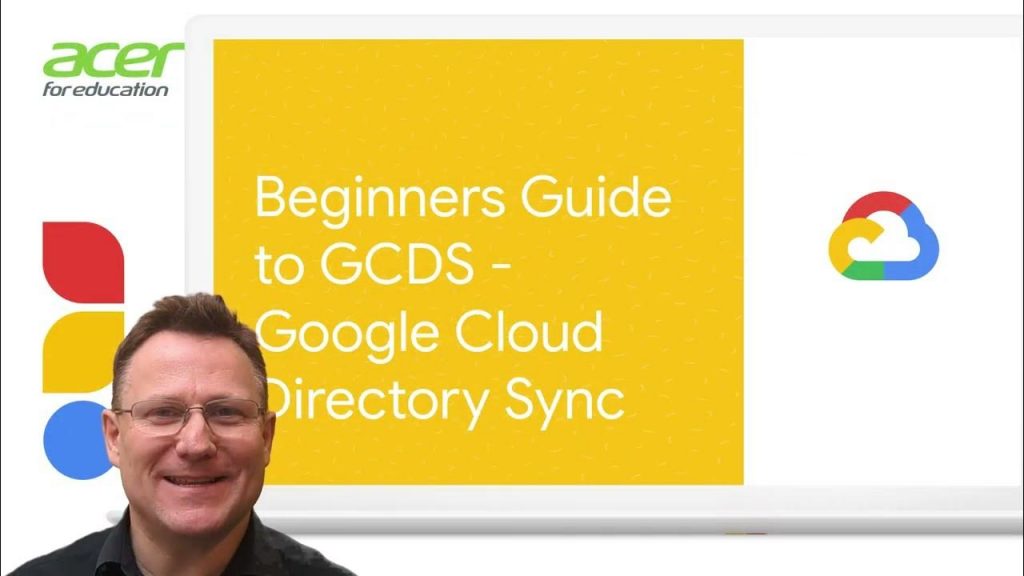
Overview of Synchronizing Groups and Organizational Units
In addition to synchronizing user accounts, Google Cloud Directory Sync offers robust capabilities for synchronizing groups and organizational units (OUs). This allows organizations to maintain a consistent structure and effectively manage access privileges within their Google Workspace environment.
But how does group synchronization work? When synchronizing groups, GCDS ensures that any changes made to group membership, such as adding or removing members, are reflected in Google Cloud. This ensures that users have the appropriate access to shared resources and collaborative spaces, promoting seamless teamwork across the organization.
Similarly, when synchronizing OUs, GCDS ensures that any changes to the organizational structure, such as adding or removing OUs, are accurately reflected in Google Cloud. This helps maintain a well-organized hierarchy and facilitates efficient management of user access and permissions.
Configuring Group Synchronization Settings and Options
To effectively synchronize groups and OUs using Google Cloud Directory Sync, organizations can configure various settings and options tailored to their specific requirements. These settings allow for granular control over the synchronization process, ensuring that the right groups and OUs are synchronized accurately.
1. Group Filtering: Organizations can choose to synchronize specific groups based on predefined criteria. This allows for selective synchronization of groups, ensuring only relevant groups are synchronized to Google Cloud.
2. Group Mapping: GCDS provides the flexibility to map groups between the source directory and Google Cloud. This includes mapping group names, email addresses, and other attributes, ensuring consistent group identification across systems.
3. OU Structure Mapping: When synchronizing OUs, organizations can map the structure of OUs between the source directory and Google Cloud. This ensures that the hierarchy of OUs is accurately replicated, enabling efficient management of user access and permissions within Google Workspace.
Managing Group Membership Changes and Updates during Synchronization
As organizations evolve, group memberships may change frequently. Google Cloud Directory Sync simplifies the management of group membership changes and updates during synchronization, ensuring that Google Cloud reflects the most up-to-date information.
Any changes made to group membership in the source directory, such as adding or removing members, are automatically synchronized to Google Cloud. This ensures that users have the appropriate access to shared resources and collaborative spaces, promoting effective collaboration within the organization.
In the next section, we will explore common troubleshooting techniques and performance optimization strategies to help you overcome any challenges that may arise during the synchronization process. Stay tuned to ensure a seamless and efficient directory synchronization experience!
Troubleshooting and Optimization

Common Issues and Errors during Synchronization
While Google Cloud Directory Sync provides a seamless synchronization experience, it’s important to be prepared for any potential issues that may arise. Here are some common issues and errors that you may encounter during synchronization:
- Connection Errors: Occasionally, connectivity issues between your on-premises directory and Google Cloud can disrupt synchronization. Ensure that the necessary network ports are open and that the connection settings are correctly configured.
- Attribute Mapping Problems: Incorrect attribute mappings can lead to synchronization errors. Double-check the attribute mappings between your source directory and Google Cloud to ensure that the correct fields are being synchronized.
- Data Validation Errors: If the data in your source directory contains formatting or validation errors, it may result in synchronization failures. Regularly validate and clean up your source directory to minimize these errors.
Troubleshooting Tips and Techniques
When faced with synchronization problems, here are some troubleshooting tips and techniques that can help you identify and resolve the issues:
- Review Log Files: Google Cloud Directory Sync generates detailed log files that provide insights into synchronization operations. Analyze these logs to identify any error messages or warnings, which can help pinpoint the root cause of synchronization problems.
- Test with a Subset of Data: If you’re encountering synchronization errors with a large dataset, consider testing with a smaller subset of data. This allows you to isolate the issue and identify any specific records causing the problem.
- Check Directory Permissions: Ensure that the user account used for synchronization has the necessary permissions in both your source directory and Google Cloud. Lack of permissions can lead to synchronization failures.
Performance Optimization Strategies
To improve synchronization speed and efficiency, consider implementing the following optimization strategies:
- Incremental Synchronization: Enable incremental synchronization, which only synchronizes changes made since the previous synchronization. This reduces the time and resources required for synchronization.
- Batching and Throttling: Adjust the sync batch size and throttling settings to optimize the synchronization process. Experiment with different values to find the optimal balance between speed and system resource usage.
- Optimize Network Connectivity: Ensure that your network infrastructure is optimized for synchronization. Consider factors such as bandwidth, latency, and network stability to enhance synchronization performance.
By being aware of common issues, employing effective troubleshooting techniques, and implementing performance optimization strategies, you can ensure smooth and efficient synchronization using Google Cloud Directory Sync.
Stay tuned for the next section, where we will explore best practices for utilizing Google Cloud Directory Sync to its fullest potential!
Conclusion
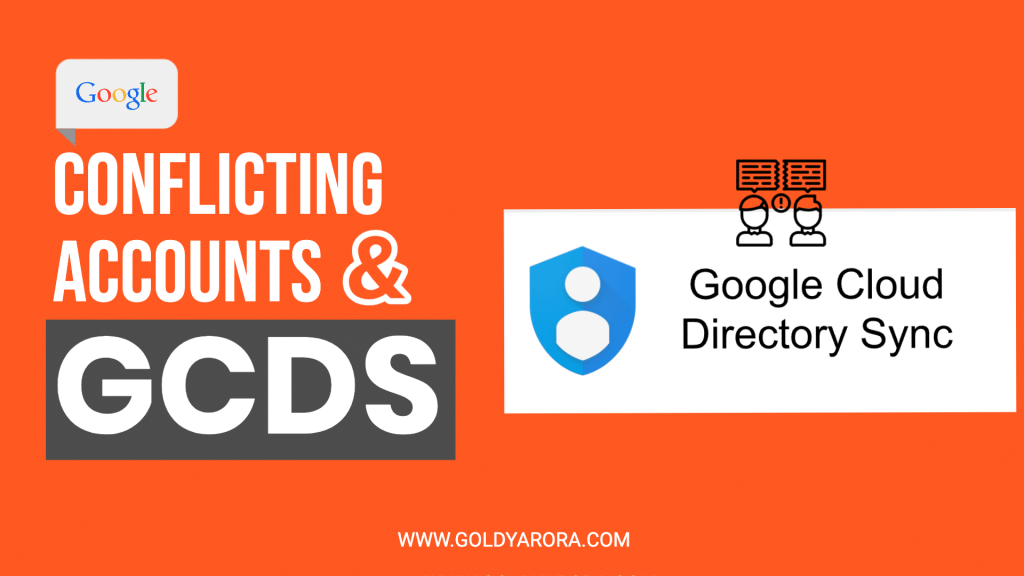
In conclusion, Google Cloud Directory Sync is an invaluable tool for organizations seeking to streamline user management and maintain data consistency across platforms. By automating the synchronization process, GCDS simplifies onboarding, offboarding, and user account updates, saving time and reducing administrative burden.
With its seamless integration between on-premises directories and Google Cloud, organizations can leverage the power of Google’s security features and robust infrastructure. This ensures data protection and enhances overall security posture.
By implementing Google Cloud Directory Sync, organizations can experience improved efficiency, enhanced security, and simplified user management. Say goodbye to manual updates and data inconsistencies, and embrace the power of synchronization with Google Cloud.
Remember, in the ever-evolving digital landscape, keeping user information synchronized is crucial for maintaining a seamless user experience, protecting sensitive data, and ensuring operational efficiency. Embrace the power of directory synchronization with Google Cloud Directory Sync and take your organization to new heights of productivity and security.
